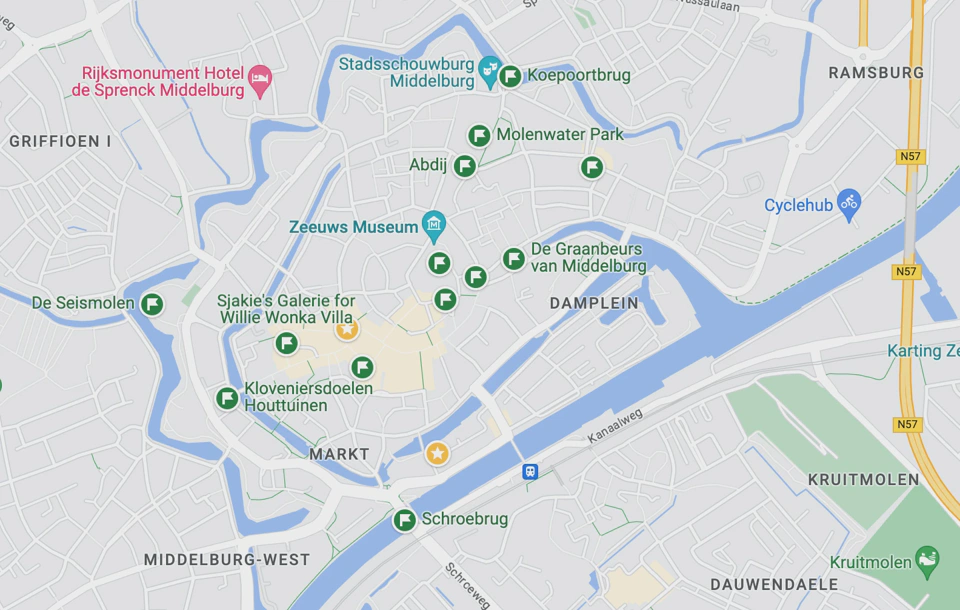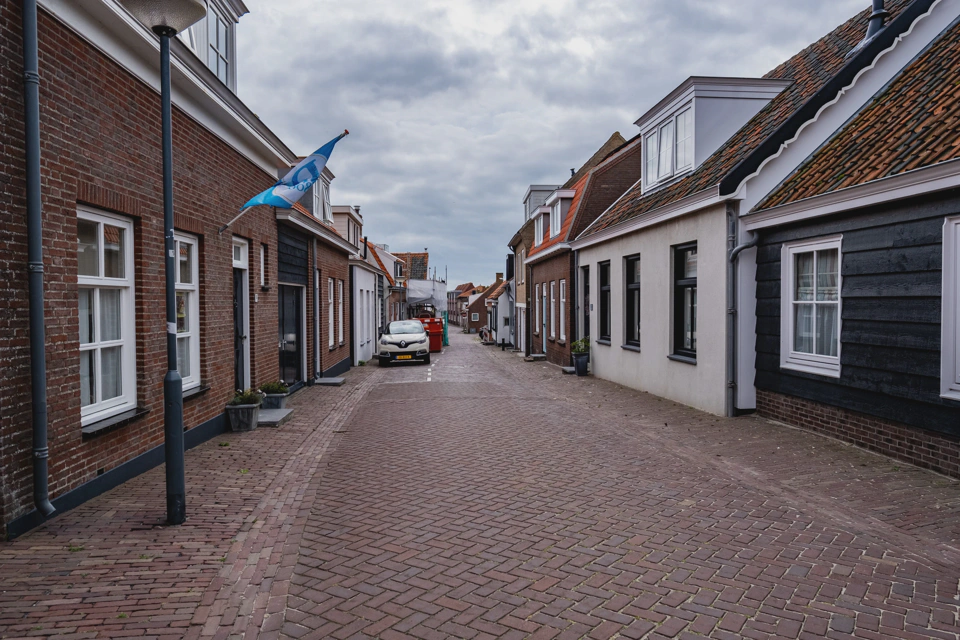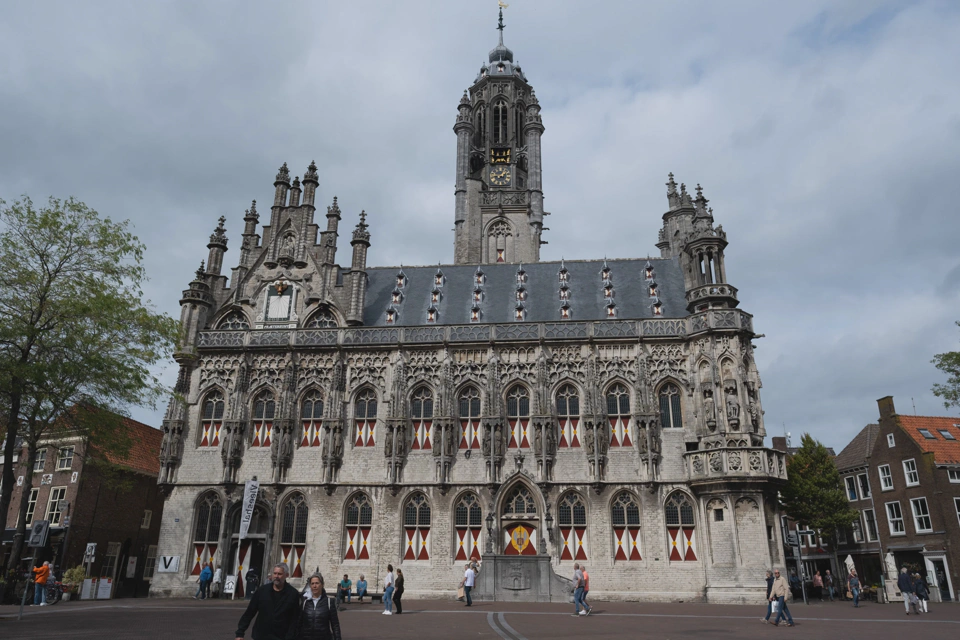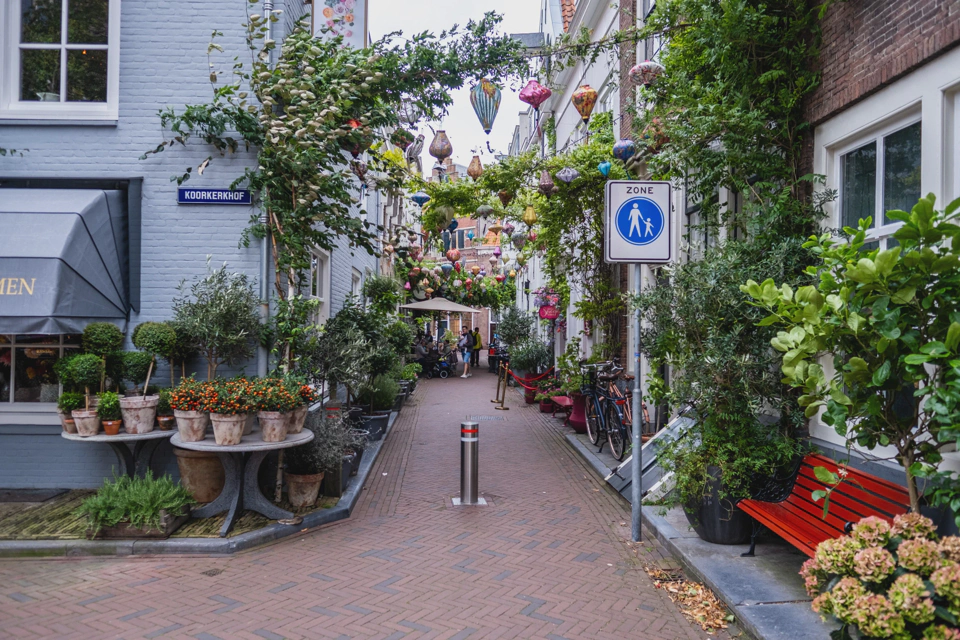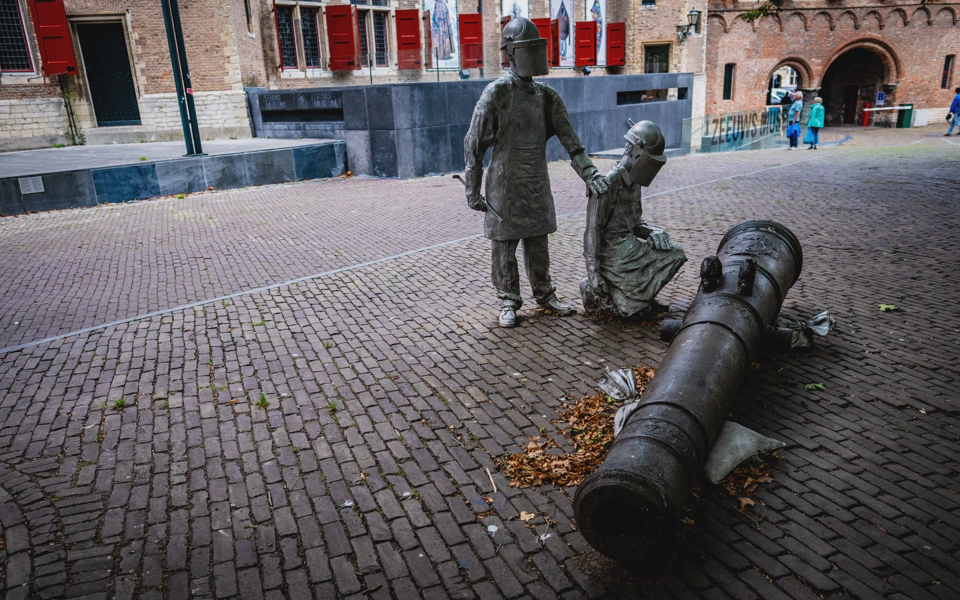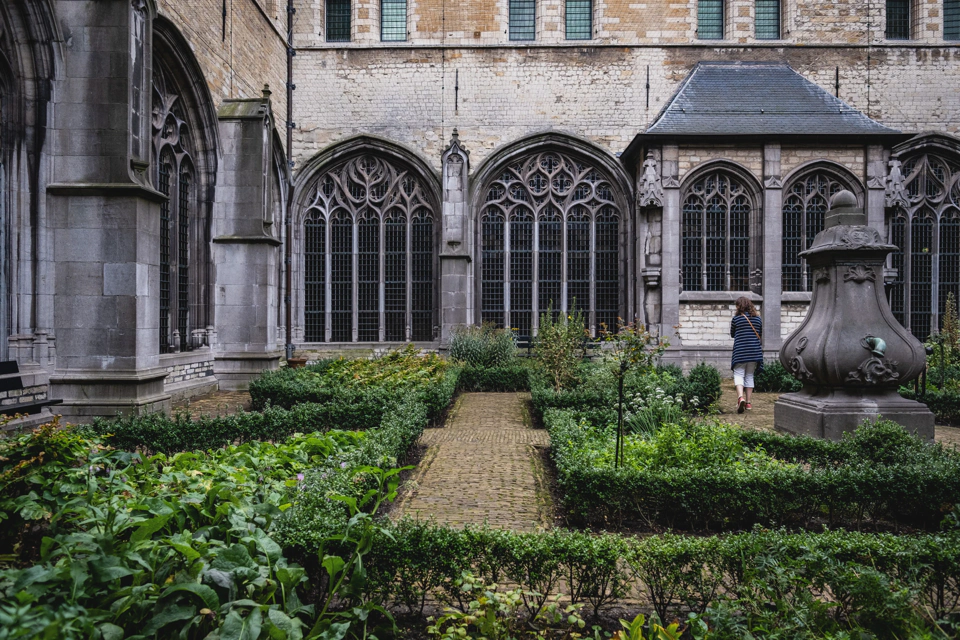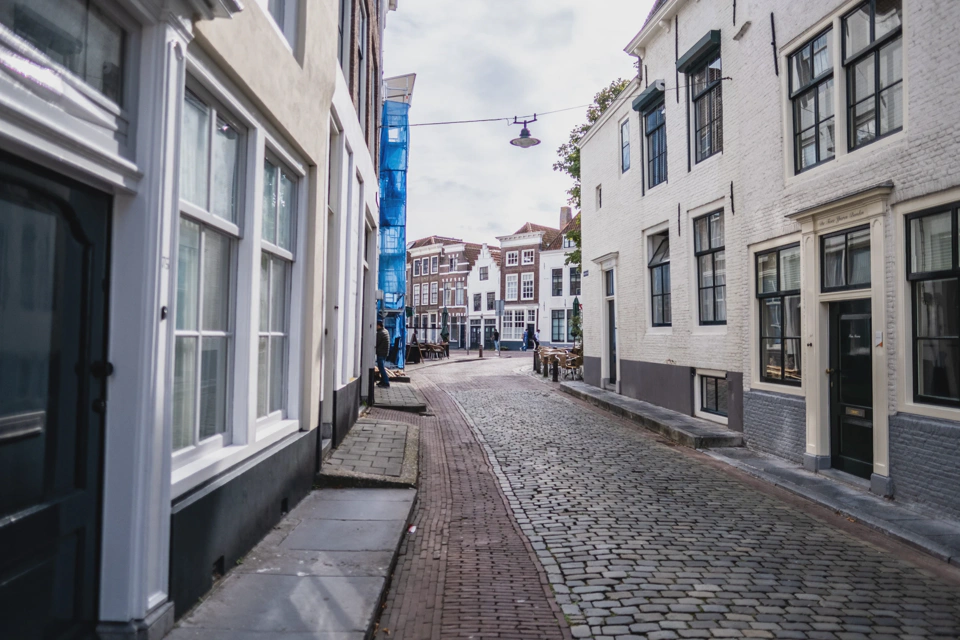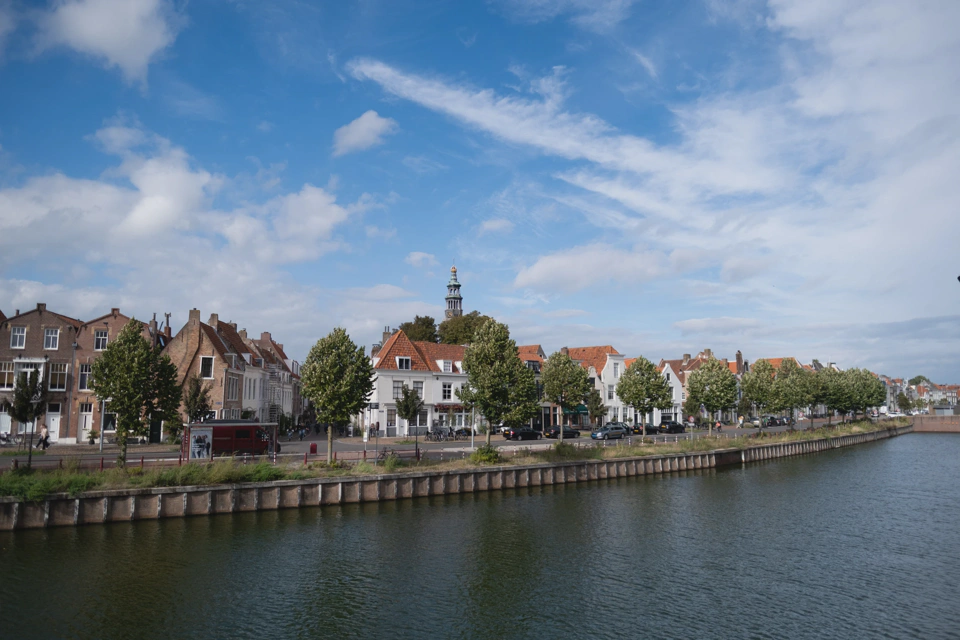A couple of days after the bike ride, with slightly better weather, we took to the Western coast. When we stopped halfway through to refill our gas tank I discovered a new way in which some Dutch businesses penalize you for being a hydrated human: you have to pay 1€ to use the gas station’s restroom, and then they offer you a discount if you buy something at the shop. Talk about psychological tricks from what some consider the pioneers of capitalism.
Our next stop was at Domburg, a small coastal town popular with Germans and also the birthplace of one of my best friends. We went there to run an errand, not for its tourist appeal. Once that was done we strolled along the beach, which despite the cloudy weather, had dozens of people. It also had more than a dozen restrooms that were spotless despite being directly on the sand, and surprisingly, free to use. I really don’t understand how this restroom strategy works.
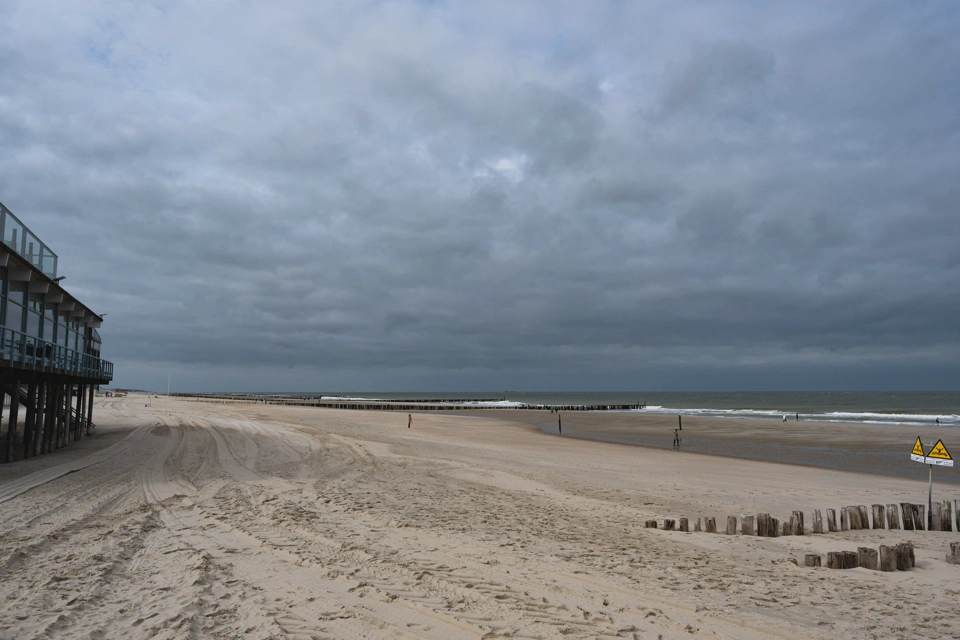
After the beach, we walked around the empty streets of the mostly dormant village. Perhaps it’s because of the short buildings, the lack of people, the beach, and the weather, but Domburg felt the most different compared to the other Dutch towns and cities we visited before and after this day’s trip.
Next, we drove to Middelburg, the capital of the Zeeland province which, by the way, is where the name “New Zealand” comes from. Middelburg was originally founded to defend against Viking raids back in the late 8th and early 9th centuries. Because of its location, it became, after Amsterdam, the most important trade center during the Dutch Golden Age.
As we strolled around the old town I had to be on the lookout for bikes constantly. It felt like when there is a kitten nearby and I have to be very careful not to squash it with my feet. In this case, though, I was the kitten and I had to be the one looking around every time I moved. At times, it also reminded me of the chaotic Indian mixed traffic.
The most impressive sight was the town hall, built between 1452 and 1520. When we arrived and I first saw it, I stood in awe for a few moments. Then I wondered how long it would take to construct it these days.
It’s considered one of the finest Gothic buildings in the Netherlands and nowadays different parts of its interior are used for weddings, the local university, and an exhibition space. Dutch practicality and diversity. Oh, and the clock tower has a nickname, “Malle Betje” or “Crazy little Beth” because it always runs behind another Middelburg clock tower.
In the same square where the town hall was we encountered a large bookstore and coffee shop with an interesting organic-looking floor plan, high ceilings, and round bookshelves. I loved it.
Somewhere else in Middelburg, we found a street covered in flowers and plants, probably an idea from the flower shop at one of the street’s ends. This kind of place isn’t just something you find in smaller towns. As we would discover later, Amsterdam has similar streets. I can’t imagine a street like this surviving the animal behavior of some of the night creatures that roam the streets of my home city, Madrid. Culture matters.
The town had an abbey complex, on whose patio we found this 2016 sculpture called The Unveiling by Sjuul Joosen. It honors a family of bronze casters from the 17th century called the Burgerhuys who among other objects, cast decorative cannons. The sculpture captures the moment when a cannon is released from its mold. My attention doesn’t usually focus on sculptures, but when I saw this one it felt alive and I connected with its Daft Punk look.
The abbey complex, which is more than 850 years old, stopped being used for religious purposes when the protestants kicked the Catholics out in 1574 and has, since then, been used for festivals and performances, and is home to the local government.
By this point in the multi-day trip, it was clear to me that the Dutch like cobblestone pavements. I love the look and the technology seems to have advantages that I would have never guessed: very long durability, good drainage, and noisiness, which is a good thing when you have people and cars close to each other.
And also by this point in the trip, it’s clear that the Dutch love town moats.
